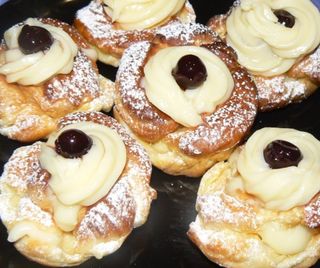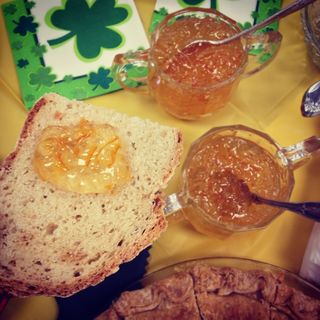Friends
Celebrating Tradition: Days for St. Patrick and San Giuseppe
Sometimes food traditions ground us in a world that seems to be breaking apart.
Posted March 16, 2018

With both Saint Patrick’s Day, March 17, and San Giuseppe Day, March 19, we see celebrations closely tied to folklore and cultural traditions. Although both days have religious connotations, it is our association with food and family that flavor our memories. Our Irish neighbors always invited us for corned beef and cabbage as well as Irish soda bread on the 17th. And on San Giuseppe Day, we shared with neighbors the Italian dessert, made only that one day a year, zeppole, fried dough fritters filled with cream.
Writing in Psychology Today Sam Levine, MD, tells us:
“When traditions take place on a regular basis, they bring predictability and constancy to our lives. In addition to the nurturance and pleasure of communing, they help remove us, at least temporarily, from the cacophony of the outside world. We get reassurance that we will indeed be all right.” Profound Need for Our Traditions.
The origin of both of these celebratory days might have a creative non-fiction aspect. St. Patrick may never have driven snakes out of Ireland. But he is credited with driving out pagans. This National Geographic article separates fact from mythology. Today, it is celebrated with parades, festivities, and even green beer.
St. Joseph is said to have had a tragic early life. But he is credited with preventing a famine in Sicily through his prayers, which ended a drought. In Catholicism, we see him as a carpenter who later married Mary, to become step father to Jesus.
Just how fried dough became synonymous with the day depends upon which legend one chooses to believe. It is said he escaped from Egypt and found his way to Naples. There is supported himself selling fried dough pastries on the streets. In Italy, Fiesta San Giuseppe is celebrated with parades and lavish tables filled with food because there it is also Father's Day.
Family ritual
Our Grandmother left her kitchen to work at Grandpa's pastry shop just that one day a year. For the entire day everyone made zeppole di San Giuseppe. Each year, shaking her head, Grandma would sigh, “I can leave my kitchen one day a year and put up with my sister-in-law in the pastry shop to honor Papa."
In reality she looked forward to the March 19th zeppole bake-off with her sister-in-law, Zia, and her cousin, Concetta. Each had a special recipe for making the custard-like ricotta cream that filled the fritters topped with a dark cherry. This was a family ritual.
Psychology of ritual
Psychologist Barbara H. Fiese, Ph.D., and colleagues at Syracuse University pointed out that
"Rituals...involve symbolic communication and convey 'this is who we are' as a group and provide continuity in meaning across generations. Also, there is often an emotional imprint where once the act is completed, the individual may replay it in memory to recapture some of the positive experience." Any routine has the potential to become a ritual once it moves from an instrumental to a symbolic act. From Routine to Ritual
Family and friendship: Zeppole and Irish soda bread
The original zeppole recipe, recorded in the 1830s by a Neapolitan duke, was similar to Gram’s fried dough rounds which she sprinkled with powdered sugar and then stuffed with a creamy custard. We can still remember the family competition. Gram put extra filling in her puffs and on the top were swirls of cream reaching for a dark Amarena cherry. Her secret ingredient was a touch of Limoncello, a liquor that her brother brought her from the old country. Zia used lemon zest with bits of candied fruit whereas Concetta favored orange zest.
I would go to the shop and sit at an ice cream table in the front of the store doing of the store my homework. If the lines of customers became too long I passed around trays of cookies. By the end of the day all three women called themselves the bake-off winner based on watching customers' facial expressions as they tasted their miniature samples decorating the counter-tops.

Facial expressions also helped define the Irish soda bread winner in our neighborhood. However, today there are still serious competitions in places ranging from Seattle, Washington to Albany, New York.
In our neighborhood, Grandma's culinary advice was always welcome because she was married to a pastry chef. She would invite neighbors to visit before St. Patrick's Day and, while sipping cups of Italian demitasse, they sampled each others' breads.
Grandma believed the bread should have "a crispy crust, and be slightly flaky inside with just the right amount of caraway seeds.”
Whether Irish soda bread or zeppole, as with any tradition, the food is symbolic of one's heritage. It is a point of contact with relatives and friends. Sharing is an opportunity to reminisce, a chance to say, “Do you remember when?” And in this chaotic world, sometimes a memory, a slice of bread, or deep fried dough is just what we need to help us feel grounded, to help us appreciate our roots.
Copyright Rita Esposito Watson 2018




